Recently this article has been going around the Internet purporting to tell "the truth" about the Winchester Mystery House, the famous sprawling mansion built in San Jose, California by Sarah Winchester, who was heir to the fortune built on the sales of the Winchester repeating rifle. Winchester commenced work on the house in 1884, and construction continued until her death in 1922.
The official story goes that the house was designed using ideas obtained from spirits during seances, which explains its bizarre design and its never-ending construction. Having worked with the sort of earthbound spirits that seances generally attract, I can tell you that this story is quite plausible. Such spirits are usually bored and will do whatever they can to keep you talking, and if you are asking for architectural plans they will keep giving them to you. The article, on the other hand, tells a different story.
I would very much like to see this evidence, but the article does not present it. The only piece it presents is a couple of phrases that appear in stained-glass windows in the home's grand ballroom. I also don't know how the author managed to reach the conclusion that Winchester not only admired Bacon, but considered herself his reincarnation. If she wasn't a spiritualist, as the author claims, the reincarnation angle is a bit of a leap.
There's a lot to unpack here. First off, while there are indeed women Masons (my wife is one, as a matter of fact) I would very much like to know which group Winchester was affiliated with and what records show that she was a member. This shouldn't be that difficult, as there have never been very many active Masonic groups that admit women. I would like to know the same with regards to her alleged Rosicrucian connections.
A few authors have claimed that Bacon was a Freemason, but there's actually not much evidence to that effect. It's not even clear that there were Freemasons, or anything that we would recognize as such, during Bacon's lifetime. Back then, "Masonry" referred to guilds of professional stonemasons, whereas today "speculative masonry," which involves esoteric symbols and allegories rather than stone-working, is the norm.
The United Grand Lodge of England, the first Masonic Grand Lodge, was founded in 1717 and the first recorded admission of a "speculative mason" dates to 1634, eight years after Bacon's death. Bacon was probably an adherent of the Rosicrucian philosophy, as he makes reference to the movement in his well-known New Atlantis. However, whether or not any sort of organized Rosicrucian movement existed during the Elizabethan period has likewise been questioned.
Certainly Hermeticism and Rosicrucianism were philosophies that appealed to many European intellectuals, and Bacon appears to have been no exception. The Rosicrucian manifestos published between 1607 and 1616 claimed to be the work of an order that dated back several generations, but little evidence has been found that such an order ever existed as such and may have been invented by the manifestos' author or authors.
Also, it should be pointed out that in the late 1800's and early 1900's there was not a firm line that could be drawn between spiritualists and other magical practitioners such as Rosicrucians. Generally speaking, adherents of the spiritualist church did not perform magical rituals, but some Rosicrucians and Hermetics did conjure and converse with spirits.
So anywhere you see two pillars, one on either side of a gate, the intention is always Masonic? I find that a little hard to believe. And as for the staircases, they have the wrong number of steps. In Masonry, there is reference to a winding staircase consisting of 3, 5, and 7 steps. But such a staircase cannot be found in the Winchester house. I also happen to know that the "switchback staircase" was built the way it was for a very specific practical reason.
As she grew older, Sarah Winchester suffered from advanced arthritis and had difficulty navigating stairs. The "switchback staircase" was built with extremely shallow steps, and therefore it needed to be more than twice the length of a regular staircase. The only way to make it fit in the space allocated was to double it back on itself. And I am a Mason myself, but I have no idea what the "fork in the road" alludes to. Maybe it's something from the appendant bodies, which I have never joined, but it is not a symbol or allegory used in the regular Blue Lodge.
The number 13 also is found in practically all Victorian construction. I've owned two houses, one built in 1889 and one built in 1886. Here are the main room dimensions from the first (excluding bathrooms and such):
13 x 13.5
13 x 13
13 x 10
13 x 10
13 x 13.5
13 x 13
13 x 9
Wow! My first house was totally built by Masons! Here are the original dimensions of the main rooms of my current house:
13.5 x 13.5
13 x 14
13 x 10.5
13 x 10
13.5 x 13.5
13 x 14.5
13 x 10
13 x 10
Double wow! It's everywhere! In fact, with Victorian wood beam construction, 13 feet is about the maximum safe span you can build without risking the floor starting to sag after years of use. So in most such houses, one of the dimensions of just about every room will be 13 unless the house is built with a more complex cross-bracing structure formed by additional support beams. It is likely that a self-taught architect like Winchester probably would not have wanted to risk it. Also, cross-bracing also makes a building more susceptible to earthquakes, of which Sarah seems to have been well aware. The house was built with an unusual "floating foundation" that likely saved it from the great earthquake of 1906.
The main danger earthquakes pose to structures is that of soil liquefaction, in which the soil below the foundation starts to behave like a liquid. This causes the foundation to move and shift, knocking over any basement crossbeams and potentially bringing the structure down. A floating foundation takes advantage of the fact that concrete is less dense than soil. A house built without a conventional basement on a series of very think concrete slabs can "float" on top of liquefied soil and maintain its integrity, especially if the place is built on multiple slabs that can move independently and has a very wide footprint - like the Winchester house.
The Winchester house lost its seven-story tower in the great earthquake and the part of the front of the house to which the tower was attached was damaged, but otherwise the place fared quite well even though the soil beneath it did liquefy during the quake. So it seems that there may have been a method to Winchester's apparent madness.
I would very much like to hear what the author is referring to with regard to Dee's encryption techniques in particular. From my studies of Dee's work, I know that not a lot is currently known about his work with encryption, though it certainly was an area of interest for him. If the author has gotten his hands on new information, it might prove useful in analyzing some of the Enochian material to see if it really is some sort of encryption, as some researchers have theorized.
Don't get me wrong - the idea that Sarah Winchester was a Hermetic or Rosicrucian magical practitioner who built the house for some occult purpose is intriguing. As a matter of fact, some of the back story of my as of yet unpublished second novel Ipswich has to do with Sarah Winchester being a Hermetic magician who built the house as a gigantic magical device. It was in doing research for that novel that I came across some of the information about the house that I am presenting here.
But do I think it's true? My answer has to be probably not. While there may be some evidence that Winchester was not a spiritualist, I have yet to see any solid evidence that she was an esotericist or magical practitioner. For all we know she was simply an eccentric with a passion for experimental architecture.
The official story goes that the house was designed using ideas obtained from spirits during seances, which explains its bizarre design and its never-ending construction. Having worked with the sort of earthbound spirits that seances generally attract, I can tell you that this story is quite plausible. Such spirits are usually bored and will do whatever they can to keep you talking, and if you are asking for architectural plans they will keep giving them to you. The article, on the other hand, tells a different story.
The evidence (both historical and archaeological) shows that Sarah Winchester strongly identified with the great genius Francis Bacon, and very likely saw herself as the reincarnation of Bacon, the details of which are specifically demonstrated with Bacon’s symbols and numeric cipher code lavishly displayed throughout Mrs. Winchester’s Grand Ballroom—particularly in the “Shakespearean Windows”.
I would very much like to see this evidence, but the article does not present it. The only piece it presents is a couple of phrases that appear in stained-glass windows in the home's grand ballroom. I also don't know how the author managed to reach the conclusion that Winchester not only admired Bacon, but considered herself his reincarnation. If she wasn't a spiritualist, as the author claims, the reincarnation angle is a bit of a leap.
Moreover, like Bacon, Sarah Winchester was a Rosicrucian and a Freemason (yes, there are women Freemasons). The House she built is overflowing with Rosicrucian and Masonic symbolism. For example, the so-called “Séance Room” (located in the precise center of the House) was actually Mrs. Winchester’s Rosicrucian “Sanctum”, a special place where Rosicrucians typically practice meditation and study at or near the center of their homes.
There's a lot to unpack here. First off, while there are indeed women Masons (my wife is one, as a matter of fact) I would very much like to know which group Winchester was affiliated with and what records show that she was a member. This shouldn't be that difficult, as there have never been very many active Masonic groups that admit women. I would like to know the same with regards to her alleged Rosicrucian connections.
A few authors have claimed that Bacon was a Freemason, but there's actually not much evidence to that effect. It's not even clear that there were Freemasons, or anything that we would recognize as such, during Bacon's lifetime. Back then, "Masonry" referred to guilds of professional stonemasons, whereas today "speculative masonry," which involves esoteric symbols and allegories rather than stone-working, is the norm.
The United Grand Lodge of England, the first Masonic Grand Lodge, was founded in 1717 and the first recorded admission of a "speculative mason" dates to 1634, eight years after Bacon's death. Bacon was probably an adherent of the Rosicrucian philosophy, as he makes reference to the movement in his well-known New Atlantis. However, whether or not any sort of organized Rosicrucian movement existed during the Elizabethan period has likewise been questioned.
Certainly Hermeticism and Rosicrucianism were philosophies that appealed to many European intellectuals, and Bacon appears to have been no exception. The Rosicrucian manifestos published between 1607 and 1616 claimed to be the work of an order that dated back several generations, but little evidence has been found that such an order ever existed as such and may have been invented by the manifestos' author or authors.
Also, it should be pointed out that in the late 1800's and early 1900's there was not a firm line that could be drawn between spiritualists and other magical practitioners such as Rosicrucians. Generally speaking, adherents of the spiritualist church did not perform magical rituals, but some Rosicrucians and Hermetics did conjure and converse with spirits.
Examples of the Masonic connection are to be found in the front, wrought iron gates whose Masonic symbolism represents the guiding path of self initiation—leading directly through the twin Masonic pillars known as “Boaz” and “Jachin” to the so-called “Switchback Staircase” which literally doubles (Masonically) as the “Winding Staircase” and “Jacob’s Ladder”—and then there is the “Seven Eleven Staircase” representing the Masonic “Fork in the Road”.
So anywhere you see two pillars, one on either side of a gate, the intention is always Masonic? I find that a little hard to believe. And as for the staircases, they have the wrong number of steps. In Masonry, there is reference to a winding staircase consisting of 3, 5, and 7 steps. But such a staircase cannot be found in the Winchester house. I also happen to know that the "switchback staircase" was built the way it was for a very specific practical reason.
As she grew older, Sarah Winchester suffered from advanced arthritis and had difficulty navigating stairs. The "switchback staircase" was built with extremely shallow steps, and therefore it needed to be more than twice the length of a regular staircase. The only way to make it fit in the space allocated was to double it back on itself. And I am a Mason myself, but I have no idea what the "fork in the road" alludes to. Maybe it's something from the appendant bodies, which I have never joined, but it is not a symbol or allegory used in the regular Blue Lodge.
Also, patterns in the architectural fabric of Mrs. Winchester’s house reveal an emphasis on certain Kabbalistic numbers utilized by Francis Bacon and his mentor, John Dee. These are the same numbers emphasized by the Rosicrucians and Freemasons… and Shakespeare. Thirteen is the most significant of these numbers as it is the most important prime number in the famous Fibonacci Sequence.
It is also the code number for the names Sarah Pardee Winchester and… Shakespeare.
The number 13 also is found in practically all Victorian construction. I've owned two houses, one built in 1889 and one built in 1886. Here are the main room dimensions from the first (excluding bathrooms and such):
13 x 13.5
13 x 13
13 x 10
13 x 10
13 x 13.5
13 x 13
13 x 9
Wow! My first house was totally built by Masons! Here are the original dimensions of the main rooms of my current house:
13.5 x 13.5
13 x 14
13 x 10.5
13 x 10
13.5 x 13.5
13 x 14.5
13 x 10
13 x 10
Double wow! It's everywhere! In fact, with Victorian wood beam construction, 13 feet is about the maximum safe span you can build without risking the floor starting to sag after years of use. So in most such houses, one of the dimensions of just about every room will be 13 unless the house is built with a more complex cross-bracing structure formed by additional support beams. It is likely that a self-taught architect like Winchester probably would not have wanted to risk it. Also, cross-bracing also makes a building more susceptible to earthquakes, of which Sarah seems to have been well aware. The house was built with an unusual "floating foundation" that likely saved it from the great earthquake of 1906.
The main danger earthquakes pose to structures is that of soil liquefaction, in which the soil below the foundation starts to behave like a liquid. This causes the foundation to move and shift, knocking over any basement crossbeams and potentially bringing the structure down. A floating foundation takes advantage of the fact that concrete is less dense than soil. A house built without a conventional basement on a series of very think concrete slabs can "float" on top of liquefied soil and maintain its integrity, especially if the place is built on multiple slabs that can move independently and has a very wide footprint - like the Winchester house.
The Winchester house lost its seven-story tower in the great earthquake and the part of the front of the house to which the tower was attached was damaged, but otherwise the place fared quite well even though the soil beneath it did liquefy during the quake. So it seems that there may have been a method to Winchester's apparent madness.
Furthermore, Sarah Winchester made extensive use of the encryption techniques devised by Dee and Bacon.
I would very much like to hear what the author is referring to with regard to Dee's encryption techniques in particular. From my studies of Dee's work, I know that not a lot is currently known about his work with encryption, though it certainly was an area of interest for him. If the author has gotten his hands on new information, it might prove useful in analyzing some of the Enochian material to see if it really is some sort of encryption, as some researchers have theorized.
Don't get me wrong - the idea that Sarah Winchester was a Hermetic or Rosicrucian magical practitioner who built the house for some occult purpose is intriguing. As a matter of fact, some of the back story of my as of yet unpublished second novel Ipswich has to do with Sarah Winchester being a Hermetic magician who built the house as a gigantic magical device. It was in doing research for that novel that I came across some of the information about the house that I am presenting here.
But do I think it's true? My answer has to be probably not. While there may be some evidence that Winchester was not a spiritualist, I have yet to see any solid evidence that she was an esotericist or magical practitioner. For all we know she was simply an eccentric with a passion for experimental architecture.

















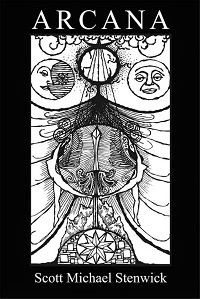

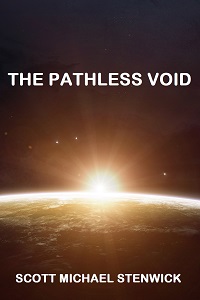

No comments:
Post a Comment